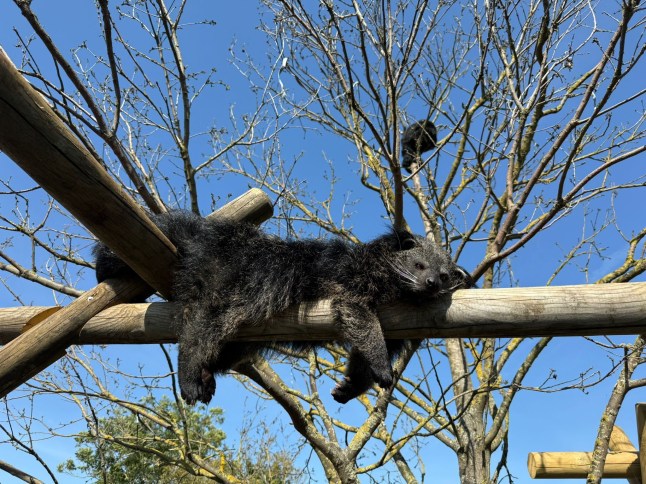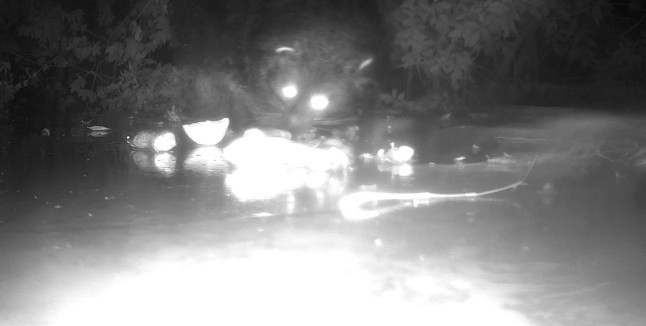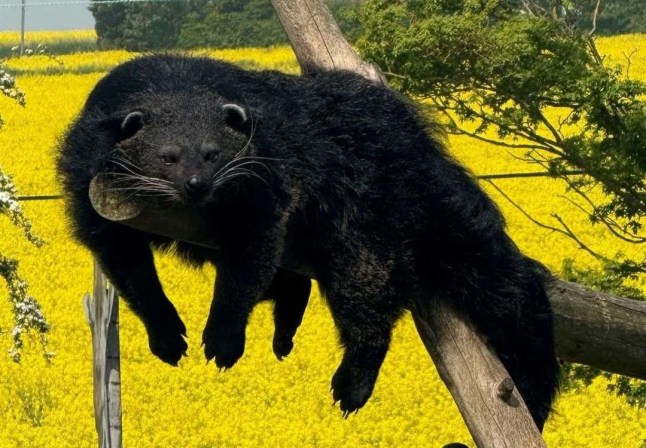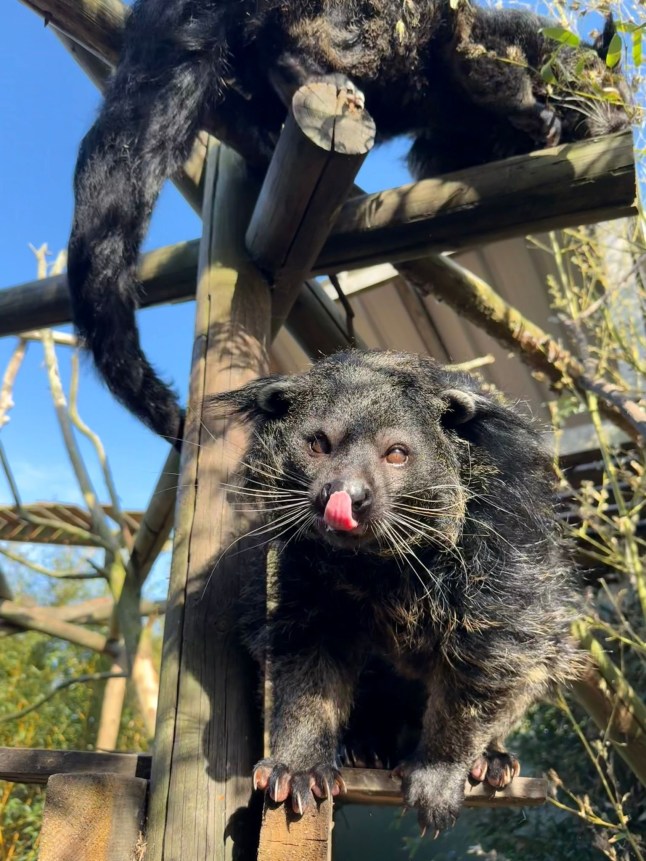Bearcat goes missing from UK zoo – only to walk back in 72 hours later

To view this video please enable JavaScript, and consider upgrading to a web
browser that
supports HTML5
video
A missing binturong, also known as a bearcat, decided to walk back into its zoo after an intense 72-hour search effort.
Suki made its way back to The Fenn Bell Conservation Project in Rochester, Kent, overnight of its own accord.
The animal was last seen in the Bell Wood area of St Mary Hoo on Thursday. Staff realised Suki was not in her enclosure during Friday morning checks.
The conservation park appealed for help in the search. It asked people to ‘not approach, corner or attempt to catch her’ as she will likely be scared.
It added: ‘Our keepers are naturally distraught and her welfare is our number one priority.’
Sign up for all of the latest stories
Start your day informed with Metro’s News Updates newsletter or get Breaking News alerts the moment it happens.


Staff, police and volunteers were involved in the search combing surrounding woodlands.
The team used drones with thermal imaging and stationed cameras with food nearby. Drones were also used to find an escaped capybara in Shropshire last year.
Suki wandered back into the conservation park at around 8.50am today after 72 hours of unsuccessful search efforts. The bearcat is now being checked by vets.
Connor Gordon, a spokesman for the zoo, said: ‘She’s had a jolly day out really, but we’re incredibly glad she’s back.
‘The entire team is breathing a sigh of relief and the mood is much improved now that she’s home.’


Mr Gordon thanked DroneSAR for Lost Dogs UK for flying a thermal drone over the woodland and Superhounds for their tracking dogs.
He added: ‘We also want to thank everyone who shared our posts and helped spread the word.’
Binturongs are rare mammals native to South and Southeast Asia. They have nocturnal tendencies and spend most of their time up in the trees.




